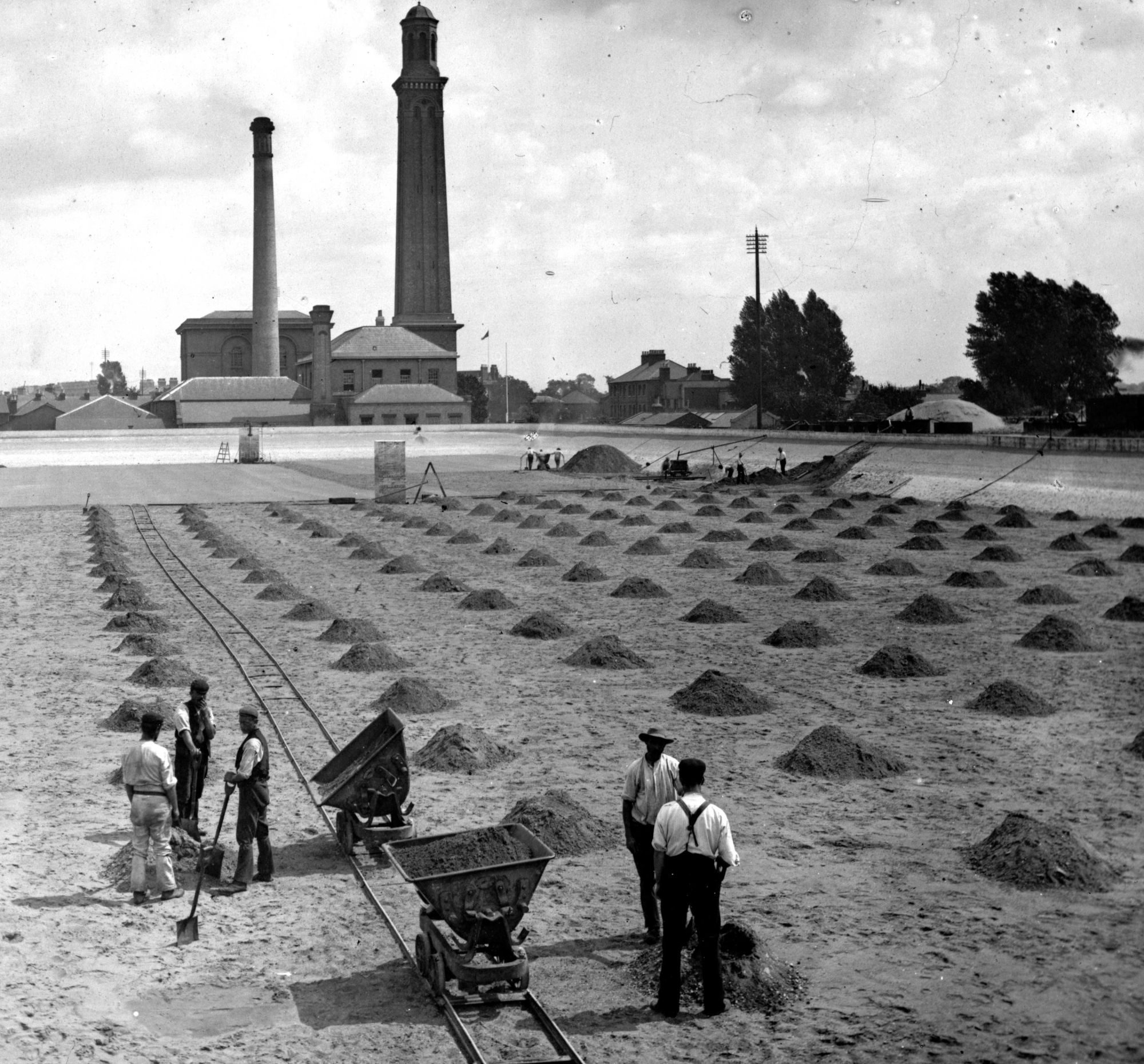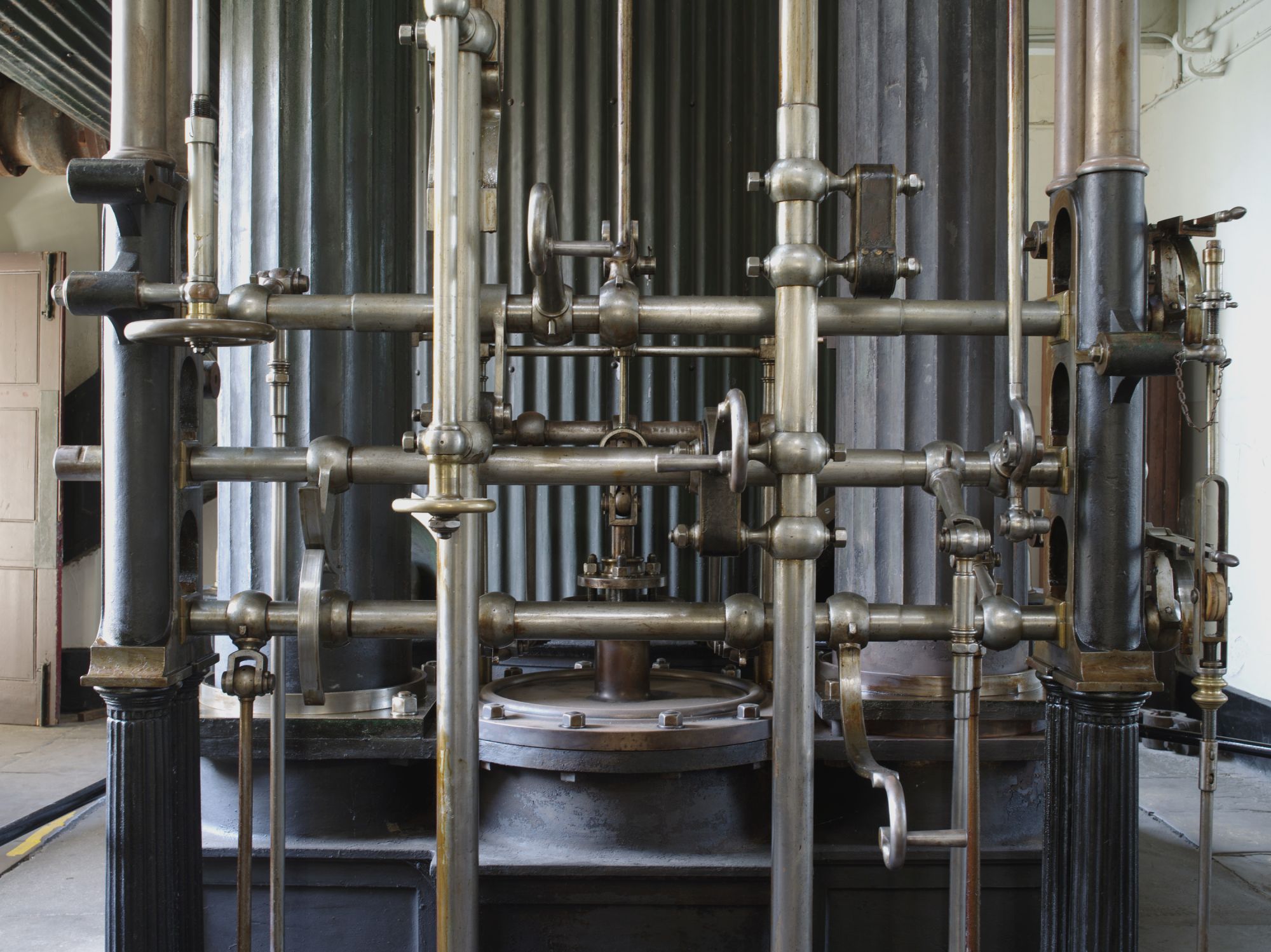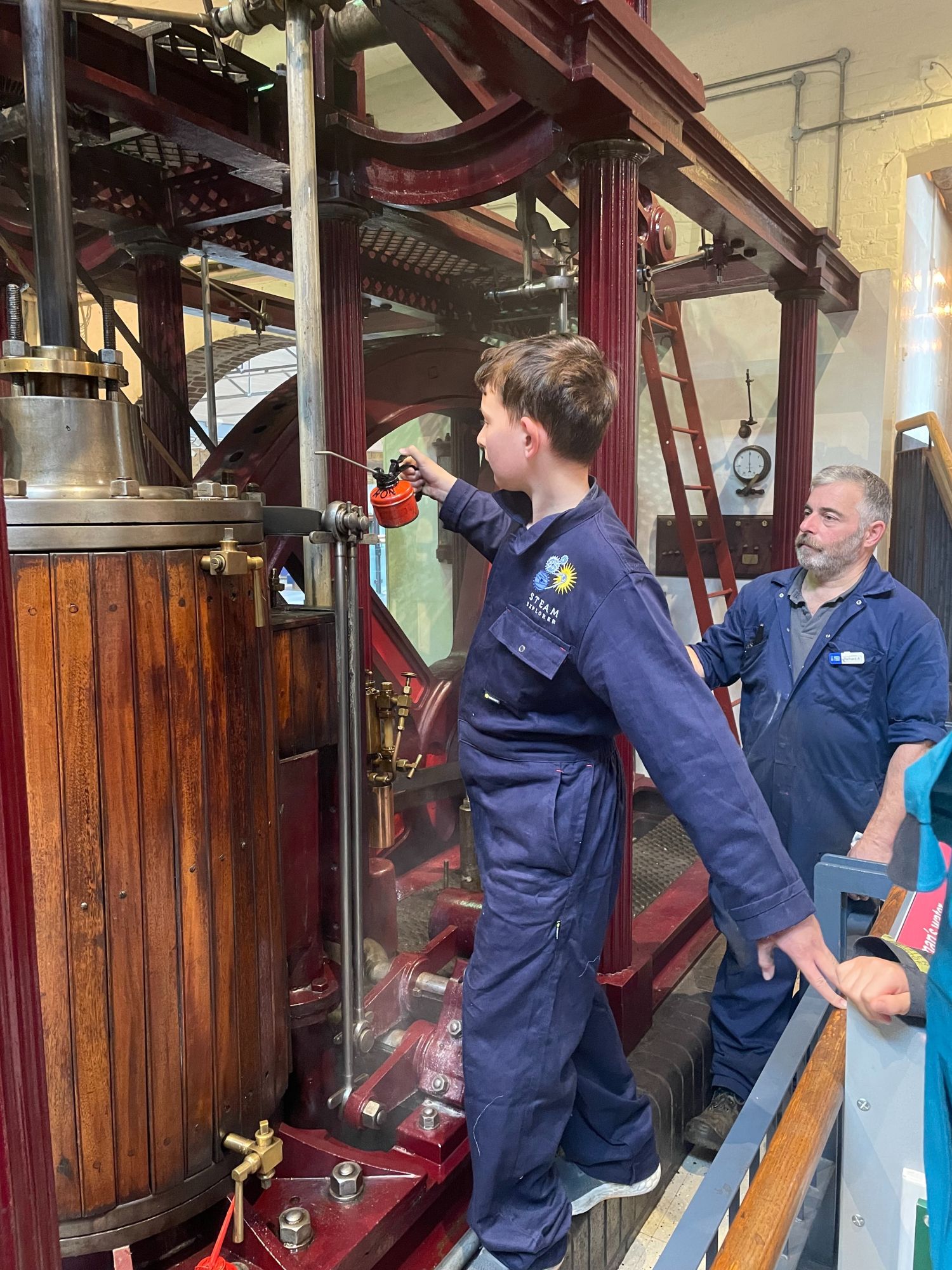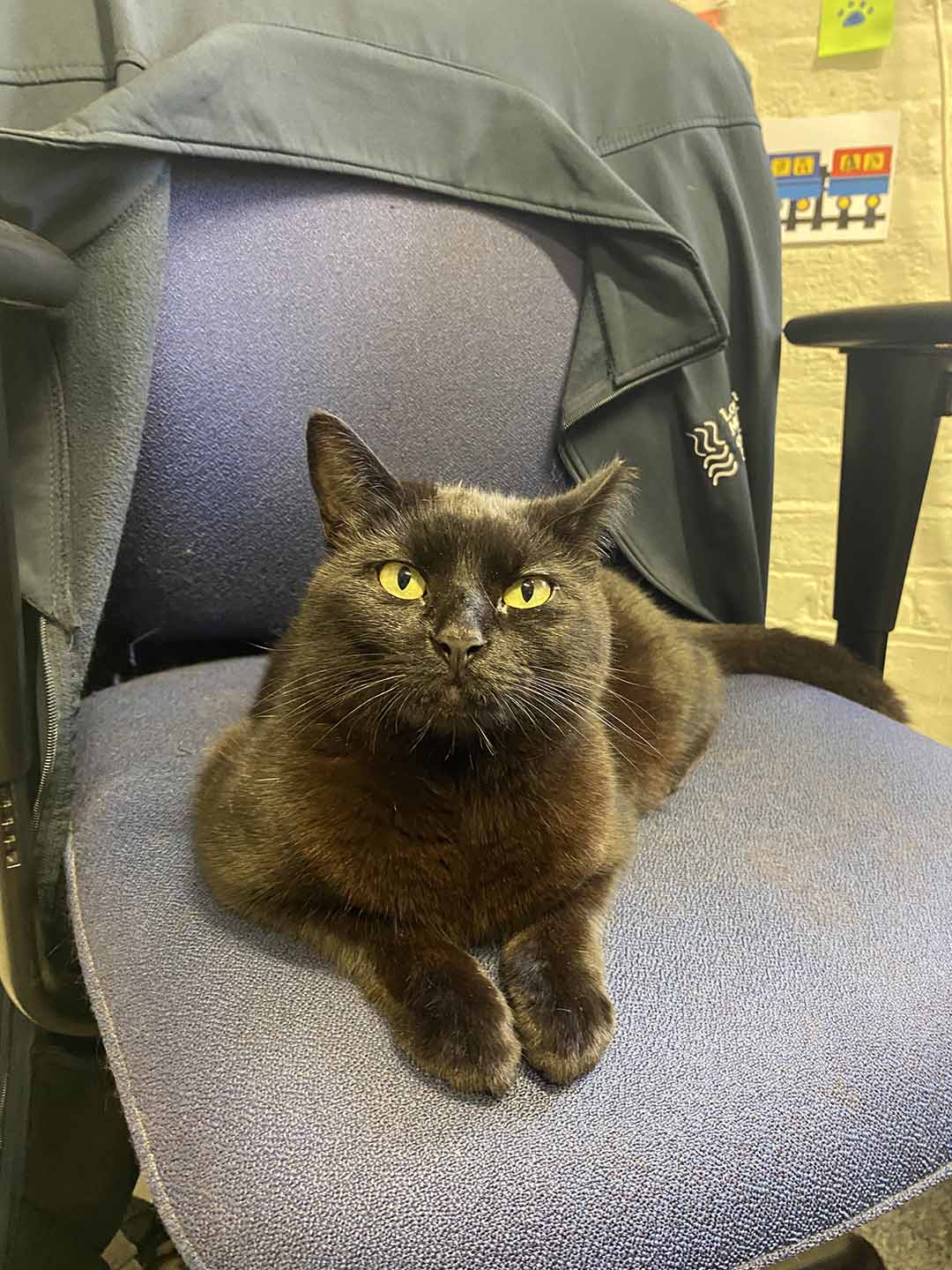
Kew Bridge Waterworks was once a fully operational waterworks and pumping station, helping supply clean water to a large section of central and West London from the early 1800s through the mid-1900s. It is now the location of the London Museum of Water & Steam, which still houses five of the original pumping steam engines used during that time.
To learn more about the museum, the history it preserves and one of its hardest workers, Piper the Museum Cat, we spoke with Marketing and Events Officer Cherry Irvine.
Why was London Museum of Water & Steam founded?
In the early nineteenth century, much of London’s water supply was deadly, with thousands of people dying regularly from cholera and other diseases after drinking dirty water drawn from the rivers, canals and wells in London. Kew Bridge Waterworks was the third location built by the Grand Junction Water Works Company in their quest to supply London with clean water. In the 1830s, Kew was mostly market gardens and the site of a royal palace, and the Thames was unpolluted by factory waste, unlike in the built-up areas of the city. Filter beds and reservoirs were soon added along with additional engines, boilers and underground pipework, supplying water to an increasingly larger area and a growing population, making it one of the world's first pioneering sites for water treatment and supply.

Thanks to Thomas Wicksteed, the innovative engineer of the Grand Junction Water Works Company, steam engines were able to, for the first time, pump water 24 hours a day at a price people could afford. The museum houses five of these original pumping engines still in their original site, including the gigantic Grand Junction 100-inch and 90-inch engines. Both three stories high, these marvels of Victorian engineering were built powerful enough to supply water to areas of London as far as Notting Hill and Kensington, and to the upper floors in buildings, helping to transform London into the multistory city it is today.
By 1900, Kew Bridge Waterworks was part of a major water supply operation in London, employing around 80 people. However, as other pumping stations were modernized, the old steam engines at Kew continued to pump water. In the 1930s diesel pumps were installed, and in 1944 electric pumps were added too, bringing an end to steam pumping at Kew.

In the early 1970s, the water supply industry was undergoing radical changes with the introduction of remote-controlled electric pumping stations and the retirement of older steam and electric machinery. At the same time, there was a growing realization of the importance of Britain’s industrial heritage. The Kew Bridge Engines Trust was formed in 1974 by a group of volunteer enthusiasts. Between 1974 and 1976, the Trust restored Kew’s Boulton & Watt (built in 1820) and Cornish 90 inch (built in 1846) engines to working order and opened the site to the public every weekend. The Trust also collected engines and artifacts from other sites. Today, the museum is home to the largest collection of stationery steam engines in the world.
What are some notable exhibits the museum has had over the years?
In 2014, with lottery funding, the museum added a major new exhibit to the site: the Waterworks Gallery, which tells the story of London’s water supply and sanitation. Interactive exhibits explore the science, engineering and technology needed to supply clean, fresh, safe potable water to a growing city. Visitors can trace the evolution of pipes carrying water, from the Roman era to the present day, and examine clean and dirty water in laboratory areas.
Last year, the museum hosted a temporary exhibition in collaboration with the Institute of Civil Engineers—an interactive exhibit that showcased the crucial role civil engineers play in addressing the challenges of climate change. Through hand-drawn illustrations and animations, visitors were encouraged to think about significant questions on topics such as waste reduction, the impact of transportation, energy sources, water conservation, smarter cities and flood management.
This spring, the London Museum of Water & Steam embarks on its first exhibition spanning its main gallery spaces. Tender Machines: Holding Paradox, by the museum’s first artist-in-residence Dr. Jasmine Pradissitto, will transform the museum with large-scale installations, sculptures and paintings that celebrate the museum’s industrial past and history of Victorian innovation, as well as its vision for a sustainable future.
Why do you think the museum is an important addition to the community?
The museum is a much-loved part of the local community of Kew and Brentford—and our standpipe tower can be seen for miles around! Many of our visitors have been coming to the museum for years. We often hear stories from grandparents, who were brought as children themselves, bringing their own grandchildren to the museum.
The museum’s monthly weekend “Steam Ups” bring the whole community together when our Victorian machines come roaring back to life. Visitors can experience the sights, sounds and power of working steam engines, enjoying a hands-on connection to the past.
Much of the work at the museum is carried out by our dedicated and valued team of volunteers, who do everything from looking after our unique collection of steam engines, archives and garden to ensuring all our visitors are warmly welcomed and have unforgettable visits.
What educational programs does the museum offer?
We offer a range of unique learning opportunities for school children from Early Years through Key Stage 3. One of our popular workshops for Key Stage 2 and 3 is Water Filtration, where pupils are asked to consider the importance of clean drinking water and its impact on health. Using scientific equipment, pupils then conduct their own experiment in order to clean dirty Thames water.

We also offer a specialized water course for youth aged 13-17 called STEAM Explorers. The Explorers learn about the history of water in London, how the engines on this site work and how to care for them. This culminates in the experience of firing up the boiler and assisting in the running of the engines for a Steam Up event. Participation in this course is free thanks to the generous support and funding of the Worshipful Company of Water Conservators.
How did Piper the Museum Cat come to join the team? Does she have a favorite spot in the museum?
Piper the Museum Cat joined the team in July 2023 from a Royal Society for the Prevention of Cruelty to Animals (RSPCA) center in Ruislip, particularly for stray cats. What many people are surprised to learn about Piper is that she came with the name! Perhaps this is what made her the perfect fit for the museum. She has quickly become a core member of staff. Not only does she provide pest control on the museum site, but she has also had such a positive impact in the office, providing the staff with mental health breaks in the form of belly rubs, cuddles and playtime. She will often follow whoever is opening the museum in the morning, making sure everything is in good working order. Her favorite spot is on the window ledge in the office where she can watch the world go by! She continues the long tradition of having cats as pest controllers on waterworks sites, where they could sleep in cozy, warm engine and boiler rooms.

Is there anything else you’d like readers to know about the museum or the history it preserves?
We are very pleased and proud to announce that we have been awarded a significant grant by the Museum Estates & Development Fund (MEND) from DCMS (Department for Digital, Culture, Media and Sport of the United Kingdom) and managed by Arts Council England. The £2.62 million award will preserve our Great Engine House, home to the world’s two largest Cornish beam engines. The funding will help make the building watertight, improve environmental conditions, remove harmful past repairs, conserve the engines and safely eliminate asbestos-containing materials. We are fundamentally grateful to everyone who donated to our Crowdfunder, in which we raised £50,000, and made this award possible so that we could be eligible to apply. Our loyal and enthusiastic members, visitors, followers and stakeholders really showed us how important we are to them by supporting us so tangibly in challenging times.
We’re celebrating our 50th anniversary on Nov. 8, celebrating all the years of engagement since we opened to the public! Follow us on social media for announcements.

